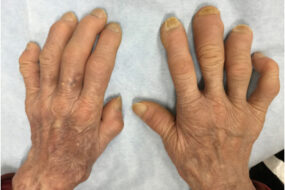- Home
- INTERNAL MEDICINE
- Q Fever

Q Fever is caused by Coxiella burnetti. Reservoir – cattle, sheep, goats. Spread – inhalation of aerosolized particles
The organism has antigen variation;
- Phase 1 antigen- very infectious
- Phase 2 antigen- non-infectious. e.g., in culture
One bacterium is enough for infection to occur. Antigenic shift- differentiates acute from chronic infection. Incubation- 3 to 4 weeks.

Clinical presentation
1. Acute disease; fever, chills, headache, pneumonia, hepatitis, acute endocarditis
- Maculopapular rash in 20 %
2. Persistent, localized infection;
- Chronic endocarditis
- Bone and joint infection
- Encephalitis
- Vascular infection
Investigations
- Serology
- Phase1 and 2 IgM titers for acute infection
- Phase 1 and 2 IgG for chronic infection
- Antiphospholipid antibodies and lupus anticoagulant
- LFT- elevated transaminases
- CBC- leukocytosis, thrombocytopenia
- ESR and creatinine phosphokinase elevation
- Isotype tests and phase-specific antigens through PCR
- Culture- identifies the organism
Differential diagnosis
- Pneumonia
- Hepatitis
- Endocarditis
- Osteomyelitis
Management
- Prompt treatment with doxycycline
- For endocarditis- prolonged treatment with doxycycline and rifampicin or ciprofloxacin and hydroxychloroquine
- Valve surgery
Prevention
- Vaccination
- Education to the public
- Quarantine of infected animals
- Pasteurized milk
Identification of those at high risk;
- Pregnant women
- Patients with cardiac valvular disease or vascular grafts












